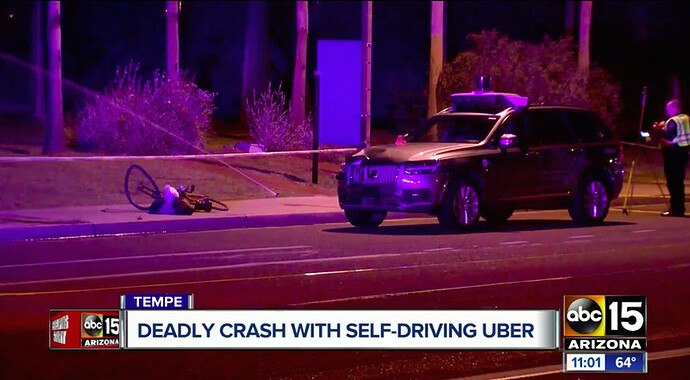The current news coming out of Arizona is that the Uber AV was traveling at a speed of 40 mph when it hit Elaine Herzberg, the 49-year-old pedestrian that was crossing the street at the time of impact. Herzberg was crossing the road in mid-block while pushing a bike. Local Tempe police stated that the driver, 44-year-old Rafael Vasquez is a safety driver for Uber and was in the car at the time of impact and that he was not impaired at the time of the accident. They also stated that Herzberg might have been a homeless person. (However, the fact that she was homeless has nothing to do with the fact that she was hit.)
Uber has suspended all its AV driving and is concentrating on investigating the current accident, supporting local law enforcement. This is the first case of a pedestrian being killed by an AV, and as such, is perhaps the most important and most unfortunate incident in the history of this emerging technology.
Uber is currently negotiating a collaboration with Toyota and Volvo, none of the companies are talking about this accident with the media.
Since this is part of a globally focused incentive, to reach a full AV system, the accident is pulling in a lot of focus from every country in the world as well as every regulatory board involved in the process. The National Traffic Safety Board has dispatched a team to Tempe to investigate.

